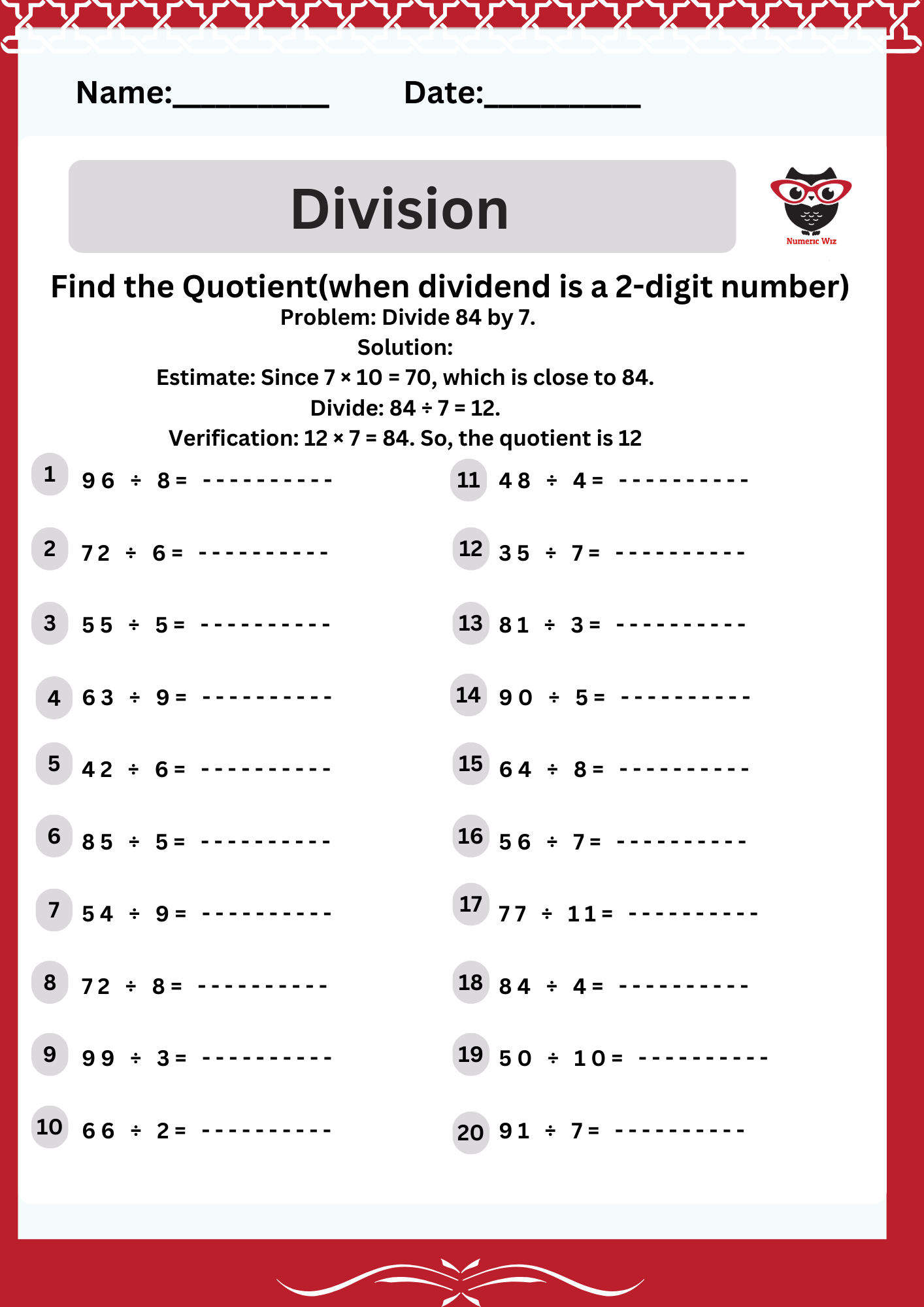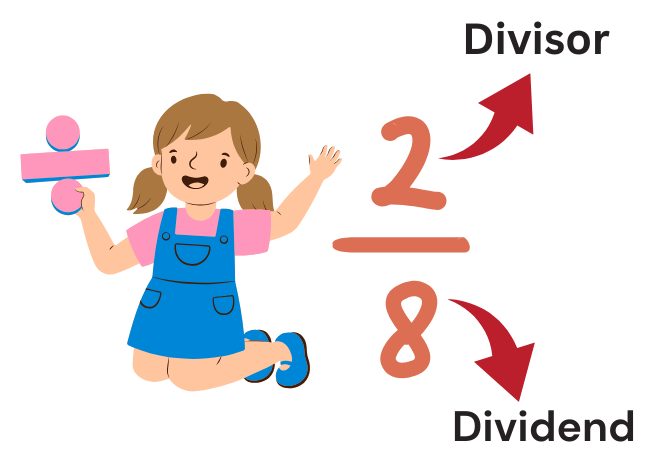
Division is a mathematical operation that involves splitting a number (called the dividend) into equal parts or groups. The number by which the dividend is divided is called the divisor, and the result of the division is called the quotient.

The division helps determine how many times one number fits into another or how to distribute something equally.
In division, the dividend is the number being divided, and the quotient is the result after dividing the dividend by the divisor. When the dividend is a 2-digit number, we divide it by the divisor (a 1-digit number or another suitable number) to find the quotient.
For example, in 12÷3=4 12 is the dividend, 3 is the divisor, and 4 is the quotient, meaning 12 can be divided into 3 equal groups of 4.
Divide 48÷6.
Solution:
Answer: 48÷6=8.
Divide 20÷4.
Solution:
Answer: 20÷4=5.

Divide 72÷8.
Solution:
Answer: 72 ÷ 8 = 9.
Understanding how to divide 2-digit numbers helps students build a strong foundation for problem-solving and logical reasoning. It is a critical skill used in real-life scenarios such as sharing items equally, calculating costs, or splitting time and resources efficiently. Mastering this concept prepares students for advanced mathematical operations like long division, fractions, and ratios.
![]()
Let’s practice and evaluate your work together by dividing two-digit numbers.
For a limited time
